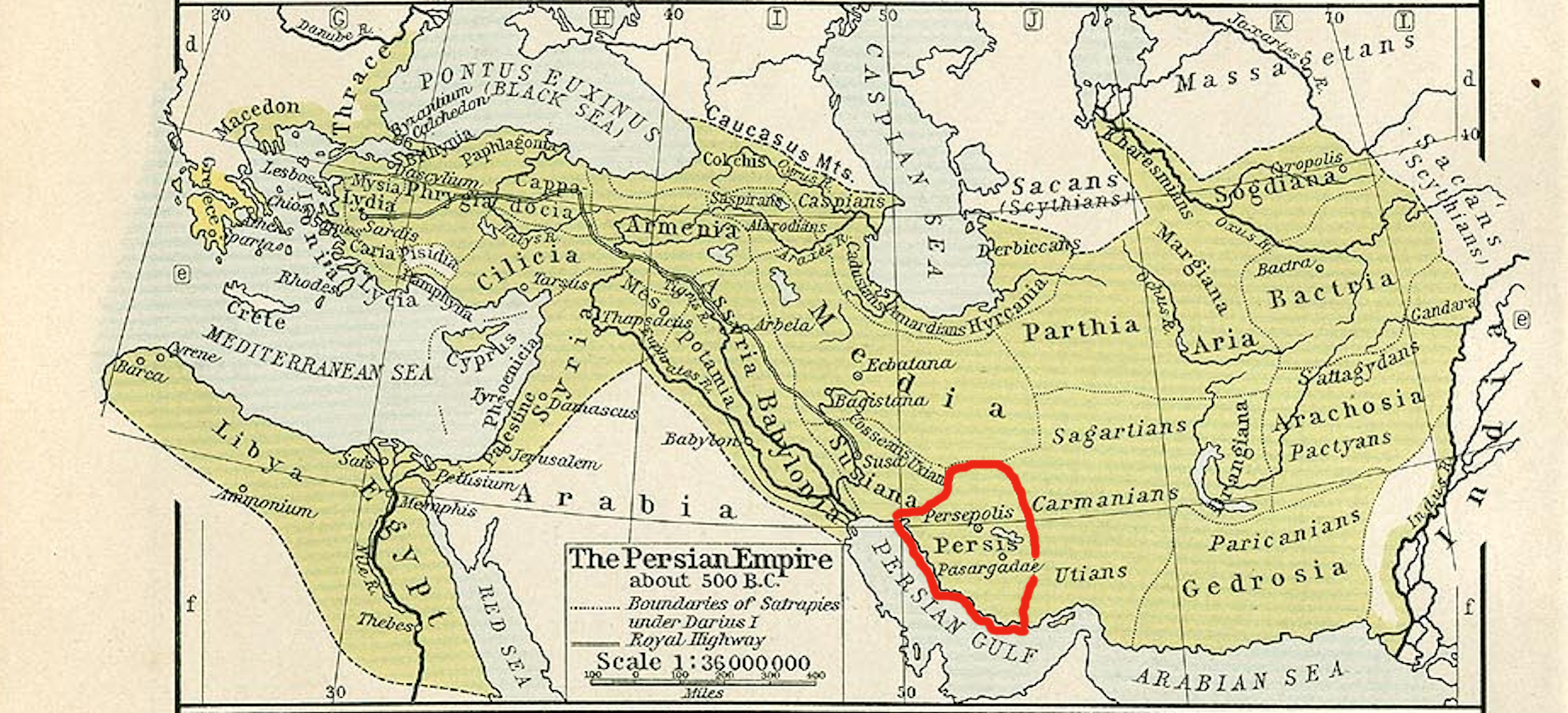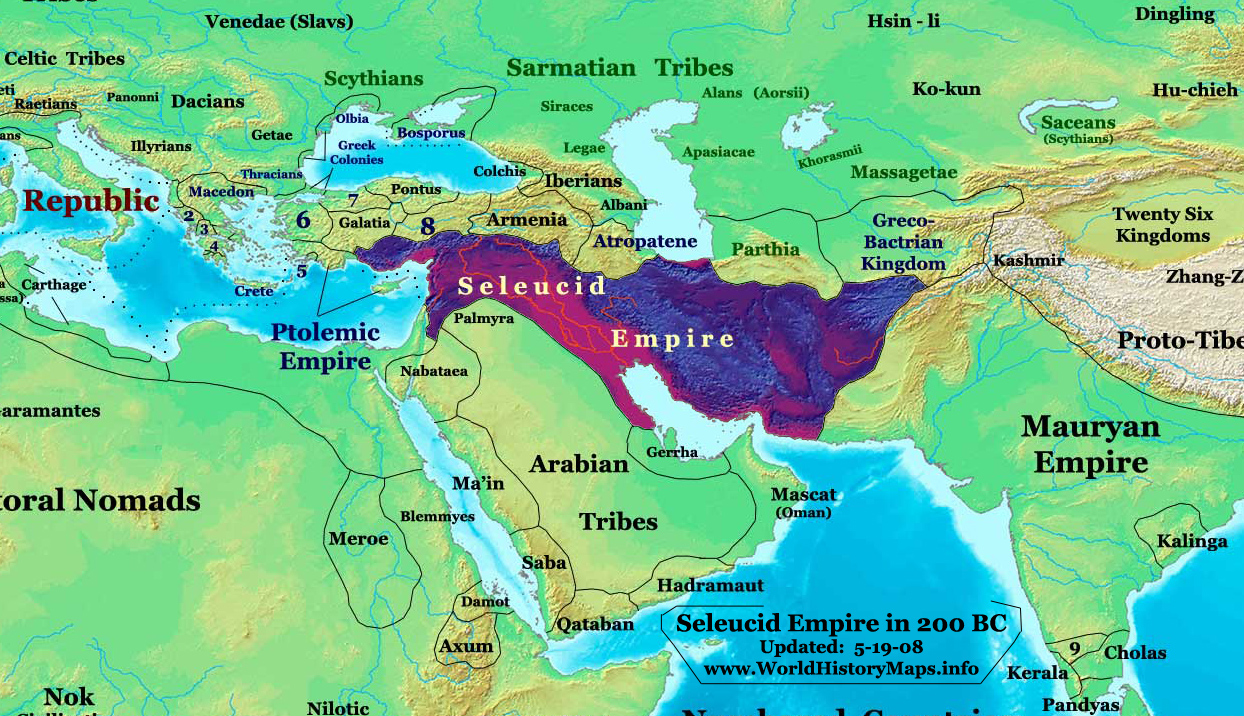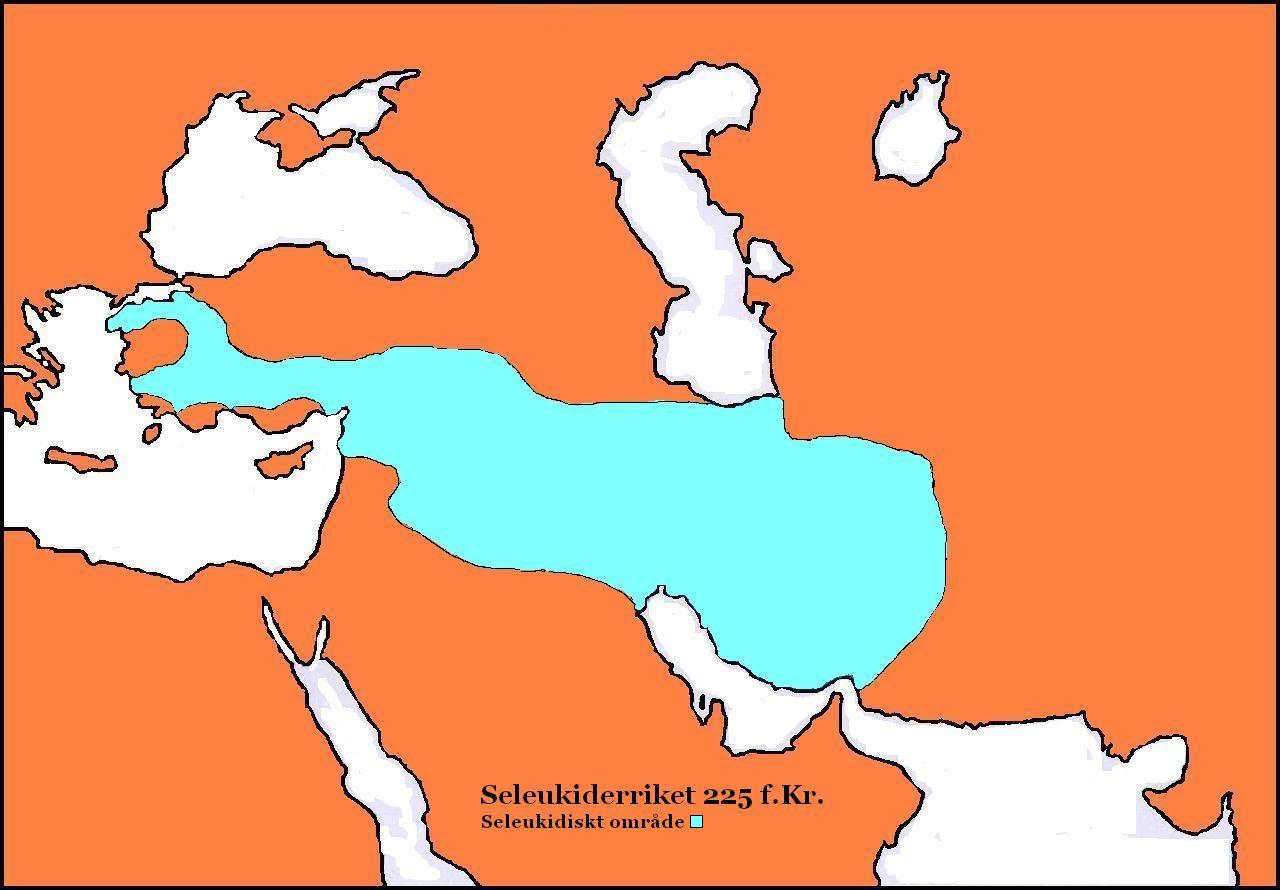|
Noumenios
Noumenios ( grc, Νουμήνιος) was a Seleucid general and satrap of the Province of Mesene (Characene, capital Antiochia in Susiana), who is said to have defeated the Persians sometime in the 3rd or 2nd century BCE. Pliny describes his ruler as being "Antiochos", but it is unknown if this is referring to Antiochos I, Antiochos II or Antiochos III, although the battle necessarily took place before 190-189 BCE, date of the Battle of Magnesia where Antiochos III was vanquished by the Romans. Alternatively, these events may have taken place during the reign of Antiochos IV. Pliny writes: This event is often used to describe some kind of adversary relationship between the Frataraka rulers of Persis and the Seleucid Empire during the 3rd or 2nd centuries BCE. The rulers of Persis may have gained independence between 205 BCE, when Antiochos III visited Antiochia in Persis in peace, and 190-189 BCE, the latest possible date for the battle led by Noumenios if the Battle ... [...More Info...] [...Related Items...] OR: [Wikipedia] [Google] [Baidu] |
Frataraka
Frataraka (Aramaic: ''Prtkr’'', "governor", or more specifically "sub-satrapal governor") is an ancient Persian title, interpreted variously as “leader, governor, forerunner”. It is an epithet or title of a series of rulers in Persis from 3rd to mid 2nd century BC, or alternatively between 295 and 220 BC, at the time of the Seleucid Empire, prior to the Parthian conquest of West Asia and Iran. Studies of ''frataraka coins'' are important to historians of this period. Rulers and period Several rulers have been identified as belonging to Fratarakā dynasty (from the title ''prtrk' zy alhaya'', or "governor of the gods" on their coins): ''bgdt'' (Baydād), ''rtḥštry'' (Ardaxšīr I), ''whwbrz'' (Vahbarz, who is called Oborzos in Polyenus 7.40), and ''wtprdt'' (Vādfradād I). Traditionally, they used to be considered as independent, anti-Seleucid rulers of Persis in the 3rd century BC. It seems however that they were rather representatives of the Seleucids in the region ... [...More Info...] [...Related Items...] OR: [Wikipedia] [Google] [Baidu] |
Charax Spasinu
, alternate_name = , image = Hyspaosines.jpg , alt = , caption = Hyspaosines (209–124 BC), founder and king of Characene, had his capital in Charax. , map_type = Iraq , map_alt = , map_size = 250 , location = Iraq , region = Basra Governorate(location is related to Maysan) , coordinates = , type = , part_of = , length = , width = , area = , height = , builder = , material = , built = , abandoned = , epochs = , cultures = , dependency_of = , occupants = , event = , excavations = , archaeologists = , condition = , ownership = , management = , public_access = , website = , notes = Charax Spasinu, also called Charax Spasinou, Charax Pasinu, Spasinu Charax ( grc, Σπασίνου Χάραξ), Alexandria (Greek: Ἀλεξάνδρεια) or Antiochia in Susiana (Greek: Ἀντιόχεια τῆς Σουσιανῆς), was an ancient port at the head of the Persian Gulf in modern day Iraq, and ... [...More Info...] [...Related Items...] OR: [Wikipedia] [Google] [Baidu] |
Antiochos II
Antiochus II Theos ( grc-gre, Ἀντίοχος Θεός, ; 286 – July 246 BC) was a Greek king of the Hellenistic Seleucid Empire who reigned from 261 to 246 BC. He succeeded his father Antiochus I Soter in the winter of 262–61 BC. He was the younger son of Antiochus I and princess Stratonice, the daughter of Demetrius Poliorcetes. Antiochus II was a forceful personality who in his lifetime largely succeeded to hold the sprawling Seleucid realm intact. However his fateful decision to repudiate his first wife Laodice and marry a Ptolemaic princess Berenice as part of a peace treaty led to a succession struggle after his death that would shake the empire's foundations and cause large territorial losses. Early life Antiochus II was the younger son of Antiochus I Soter and his famous queen Stratonice. Antiochus was initially not expected to inherit the throne, but in 267 BC his father had his elder brother Seleucus executed on charges of rebellion. Reign He inherited las ... [...More Info...] [...Related Items...] OR: [Wikipedia] [Google] [Baidu] |
Seleucid Satraps
The Seleucid Empire (; grc, Βασιλεία τῶν Σελευκιδῶν, ''Basileía tōn Seleukidōn'') was a Ancient Greece, Greek state in West Asia that existed during the Hellenistic period from 312 BC to 63 BC. The Seleucid Empire was founded by the Macedonia (ancient kingdom), Macedonian general Seleucus I Nicator, following the Partition of Triparadisus, division of the Macedonian Empire originally founded by Alexander the Great. After receiving the Mesopotamian region of Babylonia in 321 BC, Seleucus I began expanding his dominions to include the Near Eastern territories that encompass modern-day Iraq, Iran, Afghanistan, Syria, all of which had been under Macedonian control after the fall of the former History of Iran, Persian Achaemenid Empire. At the Seleucid Empire's height, it had consisted of territory that had covered Anatolia, Persia, the Levant, and what are now modern Iraq, Kuwait, Afghanistan, and parts of Turkmenistan. The Seleucid Empire was a major ce ... [...More Info...] [...Related Items...] OR: [Wikipedia] [Google] [Baidu] |
Antiochia In Persis
Nahavand ( fa, نهاوند, translit=Nahāvand / Nehāvend) is a city in Hamadan Province, Iran. It is the capital of Nahavand County. At the time of the 2006 census, its population was 72,218, in 19,419 families. It is located south of the city of Hamadan, west of Malayer and northwest of Borujerd. Inhabited continuously since prehistoric times, Nahavand was bestowed upon the House of Karen in the Sasanian period. During the Muslim conquest of Persia, it was the site of the famous Battle of Nahavand. Name The name ''Nahāvand'' is probably ultimately derived from Old Persian ''*Niθāvanta-'', related to the Old Persian name '' Nisāya'', itself derived from the prefix ''ni-'', meaning "down" and a second element which is related to Avestan ''si'' or ''say'', meaning "to lie down". It has been spelled differently in different books and sources: Nahavand, Nahavend, Nahawand, Nahaavand, Nihavand, Nehavand, Nihavend, or Nehavend, formerly called Mah-Nahavand, and in antiquity ... [...More Info...] [...Related Items...] OR: [Wikipedia] [Google] [Baidu] |
Antiochus IV Epiphanes
Antiochus IV Epiphanes (; grc, Ἀντίοχος ὁ Ἐπιφανής, ''Antíochos ho Epiphanḗs'', "God Manifest"; c. 215 BC – November/December 164 BC) was a Greek Hellenistic king who ruled the Seleucid Empire from 175 BC until his death in 164 BC. He was a son of King Antiochus III the Great. Originally named Mithradates (alternative form '' Mithridates''), he assumed the name Antiochus after he ascended the throne. Notable events during Antiochus's reign include his near-conquest of Ptolemaic Egypt, his persecution of the Jews of Judea and Samaria, and the rebellion of the Jewish Maccabees. Antiochus's accession to the throne was controversial, and he was seen as a usurper by some. After the death of his brother Seleucus IV Philopator in 175 BC, the "true" heir should have been Seleucus's son Demetrius I. However, Demetrius I was very young and a hostage in Rome at the time, and Antiochus seized the opportunity to declare himself king instead, successfully rall ... [...More Info...] [...Related Items...] OR: [Wikipedia] [Google] [Baidu] |
Battle Of Magnesia
The Battle of Magnesia took place in either December 190 or January 189 BC. It was fought as part of the Roman–Seleucid War, pitting forces of the Roman Republic led by the consul Lucius Cornelius Scipio Asiaticus and the allied Kingdom of Pergamon under Eumenes II against a Seleucid army of Antiochus III the Great. The two armies initially camped north-east of Magnesia ad Sipylum in Asia Minor (modern-day Manisa, Turkey), attempting to provoke each other into a battle on favorable terrain for several days. When the battle finally began, Eumenes managed to throw the Seleucid left flank into disarray. While Antiochus' cavalry overpowered his adversaries on the right flank of the battlefield, his army's center collapsed before he could reinforce it. Modern estimates give 10,000 dead for the Seleucids and 5,000 killed for the Romans. The battle resulted in a decisive Roman-Pergamene victory, which led to the Treaty of Apamea that ended Seleucid domination in Asia Minor. Backgrou ... [...More Info...] [...Related Items...] OR: [Wikipedia] [Google] [Baidu] |
Terminus Ante Quem
''Terminus post quem'' ("limit after which", sometimes abbreviated to TPQ) and ''terminus ante quem'' ("limit before which", abbreviated to TAQ) specify the known limits of dating for events or items.. A ''terminus post quem'' is the earliest date the event may have happened or the item was in existence, and a ''terminus ante quem'' is the latest. An event may well have both a ''terminus post quem'' and a ''terminus ante quem'', in which case the limits of the possible range of dates are known at both ends, but many events have just one or the other. Similarly, ''terminus ad quem'' ("limit to which") is the latest possible date of a non-punctual event (period, era, etc.), while ''terminus a quo'' ("limit from which") is the earliest. The concepts are similar to those of upper and lower bounds in mathematics. These terms are often used in archaeological and historical studies, such as dating layers in excavated sites, coins, historical events, authors, inscriptions or texts wher ... [...More Info...] [...Related Items...] OR: [Wikipedia] [Google] [Baidu] |
Antiochos III
Antiochus III the Great (; grc-gre, Ἀντίoχoς Μέγας ; c. 2413 July 187 BC) was a Greek Hellenistic king and the 6th ruler of the Seleucid Empire, reigning from 222 to 187 BC. He ruled over the region of Syria and large parts of the rest of western Asia towards the end of the 3rd century BC. Rising to the throne at the age of eighteen in 222 BC, his early campaigns against the Ptolemaic Kingdom were unsuccessful, but in the following years Antiochus gained several military victories and substantially expanded the empire's territory. His traditional designation, ''the Great'', reflects an epithet he assumed. He also assumed the title ''Basileus Megas'' (Greek for "Great King"), the traditional title of the Persian kings. A militarily active ruler, Antiochus restored much of the territory of the Seleucid Empire, before suffering a serious setback, towards the end of his reign, in his war against Rome. Declaring himself the "champion of Greek freedom against Roman dominat ... [...More Info...] [...Related Items...] OR: [Wikipedia] [Google] [Baidu] |
Antiochos I
Antiochus I Soter ( grc-gre, Ἀντίοχος Σωτήρ, ''Antíochos Sōtér''; "Antiochus the Saviour"; c. 324/32 June 261 BC) was a Greek king of the Seleucid Empire. Antiochus succeeded his father Seleucus I Nicator in 281 BC and reigned during a period of instability which he mostly overcame until his death on 2 June 261 BC. He is the last known ruler to be attributed the ancient Mesopotamian title King of the Universe. Biography Antiochus's father was Seleucus I Nicator and his mother was Apama, daughter of Spitamenes, being one of the princesses whom Alexander the Great had given as wives to his generals in 324 BC. The Seleucids fictitiously claimed that Apama was the daughter of Darius III, in order to legitimise themselves as the inheritors of both the Achaemenids and Alexander, and therefore the rightful lords of western and central Asia. In 294 BC, prior to the death of his father Seleucus I, Antiochus married his stepmother, Stratonice, daughter of Demetrius Polior ... [...More Info...] [...Related Items...] OR: [Wikipedia] [Google] [Baidu] |
Characene
Characene (Ancient Greek: Χαρακηνή), also known as Mesene (Μεσσήνη) or Meshan, was a kingdom founded by the Iranian Hyspaosines located at the head of the Persian Gulf mostly within modern day Iraq. Its capital, Charax Spasinou (Χάραξ Σπασινού), was an important port for trade between Mesopotamia and India, and also provided port facilities for the city of Susa further up the Karun River. The kingdom was frequently a vassal of the Parthian Empire. Characene was mainly populated by Arabs, who spoke Aramaic as their cultural language. All rulers of the principality had Iranian names. Members of the Arsacid dynasty also ruled the state. Name The name "Characene" originated from the name of the capital of the kingdom, Charax Spasinu. The kingdom was also known by the older name of the region, "Mesene", which is seemingly of Persian origin, meaning "land of buffalos" or the "land of sheep." History The capital of Characene, Alexandria, was originally found ... [...More Info...] [...Related Items...] OR: [Wikipedia] [Google] [Baidu] |
Pliny The Elder
Gaius Plinius Secundus (AD 23/2479), called Pliny the Elder (), was a Roman author, naturalist and natural philosopher, and naval and army commander of the early Roman Empire, and a friend of the emperor Vespasian. He wrote the encyclopedic ''Naturalis Historia'' (''Natural History''), which became an editorial model for encyclopedias. He spent most of his spare time studying, writing, and investigating natural and geographic phenomena in the field. His nephew, Pliny the Younger, wrote of him in a letter to the historian Tacitus: Among Pliny's greatest works was the twenty-volume work ''Bella Germaniae'' ("The History of the German Wars"), which is no longer extant. ''Bella Germaniae'', which began where Aufidius Bassus' ''Libri Belli Germanici'' ("The War with the Germans") left off, was used as a source by other prominent Roman historians, including Plutarch, Tacitus and Suetonius. Tacitus—who many scholars agree had never travelled in Germania—used ''Bella Germani ... [...More Info...] [...Related Items...] OR: [Wikipedia] [Google] [Baidu] |


.png)






